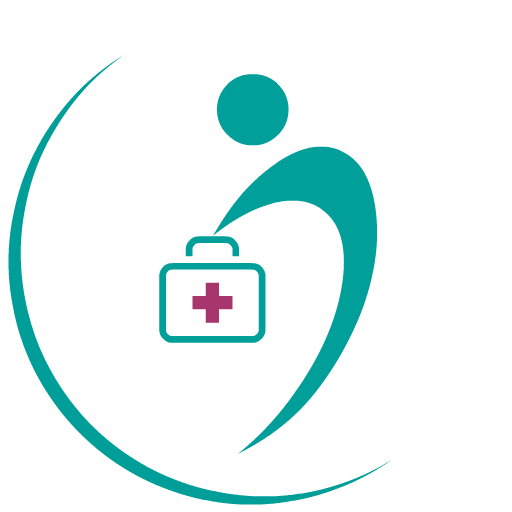When you have ear pain or suspect that your child does, you may be dealing with an ear infection.
Infections of the middle ear are called otitis media and they are the most common type of ear infection individuals face.
Discomfort, ear drainage, and muffled hearing are all common signs and symptoms, but less-specific ones (irritability, decreased appetite, and others) can also occur.
These infections are usually easy to recognize in children who are able to articulate how they are feeling but can be more difficult for parents to identify in infants and toddlers.
Frequent Symptoms
The common signs and symptoms of a middle ear infection in adults and children include:
Ear pain (otalgia), especially just in one ear or when lying down
Hearing loss: Sounds can be muffled as if you are wearing an earplug in the affected ear.
A feeling of fullness in the ear
Feeling like you are ill in general
Ear drainage (otorrhea)
Fluid behind the eardrum detected with an electronic ear monitor
Children often have a middle ear infection with a cold or soon after a cold; you can expect that they will have cold symptoms such as a cough and runny nose just before the ear infection sets in. Babies and toddlers obviously can't tell you they are feeling ear pain, so you will need to know the symptoms they commonly show.
Rare Symptoms
The buildup of pressure in the inner ear can cause a ruptured eardrum, with a sudden flow of yellow, green, or bloody drainage from the ear. The ear pain can then subside quickly. You may have ringing in the ear and the spinning sensation of vertigo.
Otitis Media With Effusion
Otitis media with effusion, also called secretory otitis media, is an accumulation of fluid in the middle ear. It can follow a middle ear infection. In other cases, the effusion may have developed due to a blocked eustachian tube without infection, but the fluid traps bacteria that can develop into an ear infection.
Otitis media with effusion often has no symptoms, but it can be accompanied by:
A feeling of fullness in the ear
Mild hearing loss (you may turn up the volume on the television or a video)
Cracking or popping sounds with swallowing
Chronic Otitis Media
Chronic otitis media (repeat infections or ongoing infections) can lead to additional signs and symptoms, as well as indications that complications can be developing. You or your child may have renewed symptoms of an ear infection after having a cold or getting water into the middle ear (due to a perforated eardrum). These may include:
Hearing loss
Chronic ear drainage
Drainage and swelling behind the ear
Balance issues
Facial weakness
Deep ear pain
Headache
Confusion
Fatigue
Speech delay in young children
Complications
The eardrum can rupture due to the pressure of the accumulated fluid and pus in the ear. A hole or a small tear develops in the eardrum (tympanic membrane). This will almost always heal on its own in a few weeks without the need for medical treatment. The spinning sensation you can have with a ruptured eardrum can produce nausea or vomiting. You should see a healthcare provider to get appropriate treatment. If the eardrum fails to heal, it may need surgical repair.
In children, repeated ear infections with conductive hearing loss can impair speech and language development and may cause kids to not be able to locate where sounds are coming from. Children may have more difficulty distinguishing and understanding words when they are in noisy places such as the classroom.
Such infections can contribute to auditory processing disorders. Permanent hearing loss is rare, but it can develop with prolonged and repeated infections.
Chronic otitis media can lead to labyrinthitis and damage to the delicate structures in the ear that help with hearing and maintaining balance. Cysts, or benign growths of skin tissue (cholesteatoma) can also develop in the middle ear.
Although rare, bacterial otitis media sometimes spread to the mastoid bone (mastoiditis) or to the inner ear. In extremely rare cases, the infection could spread to the brain and cause meningitis or an abscess.
When to See a Healthcare Provider
The American Academy of Pediatrics promotes an approach of treating the pain and waiting for two to three days to see if it goes away, as it usually will. You should check with your healthcare provider as to when a child needs to be seen.
Adults should call their healthcare provider when experiencing ear pain or other symptoms to learn whether they should wait or come in for an examination. Adults with otitis media should be evaluated by an ENT practitioner to rule out nasopharyngeal cancer, which is a rare cause of otitis media in adults.
A healthcare provider will be able to confirm the diagnosis by seeing signs of inflammation (redness, bulging) of the eardrum on physical examination.
If you or your child is treated for a middle ear infection, take note of when your practitioner says you should have improvement. If the ear doesn't respond to treatment, or if new symptoms are noted, call your medical professional or pediatrician. Similarly, if any new symptoms are noted after treatment for otitis media with effusion, mention them to your healthcare provider.
Prevention
The following tips may reduce the risk of developing ear infections:
Prevent common colds and other illnesses. Teach your children to wash their hands frequently and thoroughly and to not share eating and drinking utensils. Teach your children to cough or sneeze into their elbow. If possible, limit the time your child spends in group child care. A child care setting with fewer children may help. Try to keep your child home from child care or school when ill.
Avoid secondhand smoke. Make sure that no one smokes in your home. Away from home, stay in smoke-free environments.
Breastfeed your baby. If possible, breast-feed your baby for at least six months. Breast milk contains antibodies that may offer protection from ear infections.
If you bottle-feed, hold your baby in an upright position. Avoid propping a bottle in your baby's mouth while he or she is lying down. Don't put bottles in the crib with your baby.
Talk to your doctor about vaccinations. Ask your doctor about what vaccinations are appropriate for your child. Seasonal flu shots, pneumococcal and other bacterial vaccines may help prevent ear infections.
How do you treat symptoms of an ear infection?
If the ear infection is mild, your healthcare provider may suggest waiting a couple of days before prescribing an antibiotic. Over-the-counter medications like Tylenol (acetaminophen) and Advil (ibuprofen) can help to relieve symptoms of an earache. Never give aspirin to children since it may lead to a life-threatening condition called Reye's syndrome. If your symptoms persist or get worse, check with your healthcare provider.
How soon will symptoms of an ear infection improve?
Symptoms of a mild ear infection may improve on their own within two or three days. When your healthcare provider prescribes an antibiotic, your symptoms should improve in a few days. If you or your child is still sick after several days, check with your practitioner. Even after an infection is gone, you may still have fluid in your middle ear, but it will usually go away within three to six months.
Blogs
Stay connected to health experts and read what they have to say via DocSmart.
Please sign up to create your own blog





